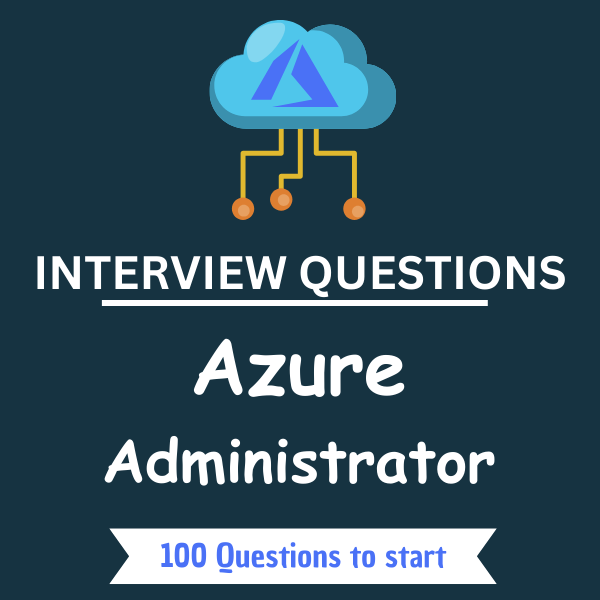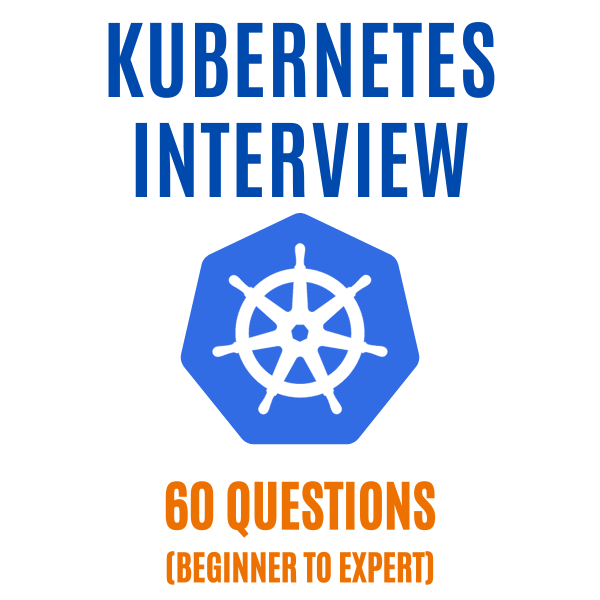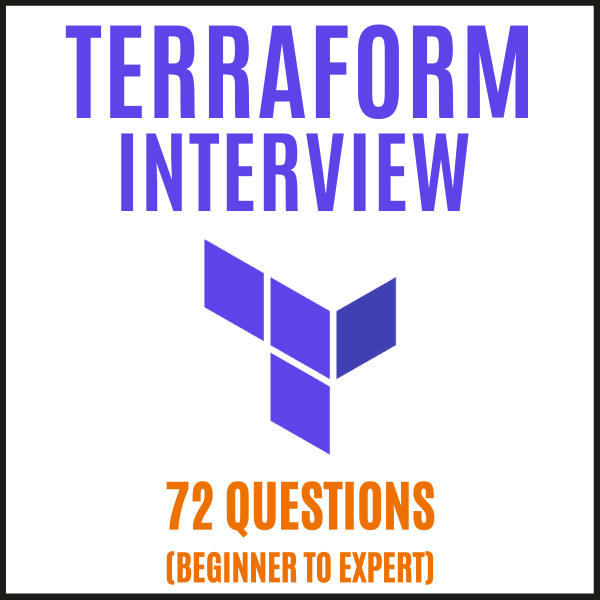
Beginners Questions (30 Questions):
- How do you create a new user in Microsoft Azure?
- What is the purpose of managing user and group properties in Azure?
- How can you assign roles to users in Azure?
- Explain the concept of self-service password reset (SSPR) in Azure.
- What are Azure Policy and its main functions?
- How do you configure resource locks in Azure?
- What is the role of tags in managing Azure resources?
- How can you manage costs in Azure using Azure Advisor recommendations?
- What is the purpose of Azure Storage firewalls and virtual networks?
- How do you configure access keys for Azure Storage accounts?
- Explain the difference between Azure Files and Azure Blob Storage.
- How can you automate resource deployment in Azure using ARM templates?
- What is a virtual machine scale set and its benefits?
- How do you provision and manage containers in Azure?
- What is the role of Azure Container Registry?
- How do you create and configure virtual networks in Azure?
- What are network security groups (NSGs) and their significance in Azure?
- How can you monitor resources in Azure using Azure Monitor?
- Explain the process of setting up alert rules in Azure Monitor.
- What is a Recovery Services vault used for in Azure?
- How do you configure a backup policy in Azure Backup?
- What is Azure Site Recovery and when would you use it?
- How do you configure reports and alerts for backups in Azure?
- What is Azure Disk Encryption used for?
- How do you manage virtual machine sizes in Azure?
- Explain the purpose of Azure Bastion.
- How do you configure public IP addresses in Azure?
- What is the role of Azure DNS in virtual networking?
- How do you troubleshoot network connectivity issues in Azure?
- Explain the process of configuring log settings in Azure Monitor.
Intermediate Questions (30 Questions):
- How do you manage licenses for users in Microsoft Azure?
- Explain the concept of applying and managing tags on Azure resources.
- How do you interpret access assignments in Azure?
- What are the benefits of using shared access signatures (SAS) tokens in Azure Storage?
- How can you configure object replication in Azure Storage accounts?
- Explain the process of modifying an Azure Resource Manager template.
- How do you move a virtual machine to another resource group in Azure?
- What is the difference between Azure Container Instances and Azure Container Apps?
- How do you configure scaling for an App Service plan in Azure?
- Explain the process of configuring network security groups (NSGs) in Azure.
- How do you evaluate effective security rules in NSGs?
- What are the main components of an Azure Backup vault?
- How do you perform backup and restore operations using Azure Backup?
- Explain the process of configuring an internal load balancer in Azure.
- How do you configure service endpoints for Azure PaaS in virtual networks?
- What is the purpose of Connection Monitor in Azure Network Watcher?
- How do you configure a failover to a secondary region using Azure Site Recovery?
- What are the benefits of using Azure Blob Storage tiers?
- How do you configure snapshots for Azure Files?
- Explain the process of deploying resources using an Azure Resource Manager template.
- How do you configure Azure Storage redundancy for high availability?
- What is the significance of configuring soft delete for Azure Files?
- How do you interpret metrics in Azure Monitor?
- Explain the role of action groups in Azure Monitor.
- How do you configure log settings for Azure Monitor Insights?
- What is the purpose of configuring Transport Layer Security (TLS) for an App Service?
- How do you configure name resolution in Azure virtual networks?
- What are the main benefits of using Azure Advisor recommendations for cost management?
- How do you configure alerts for Azure resources?
- Explain the process of deploying virtual machines to availability zones in Azure.
Expert Questions with scenarios (40 Questions):
- Scenario: You need to onboard a new employee to your Azure environment. Describe the steps you would take to create their user account, assign appropriate roles, and manage their access to resources.
- Scenario: Your company needs to ensure compliance with specific regulatory requirements for data storage in Azure. How would you configure Azure Storage accounts to meet these compliance standards?
- Scenario: You are tasked with optimizing the performance of Azure virtual machines in your environment. Discuss strategies you would implement to achieve this objective.
- Scenario: A critical application deployed in Azure is experiencing intermittent connectivity issues. Describe your approach to troubleshooting and resolving this issue.
- Scenario: Your organization wants to implement a disaster recovery plan for its Azure resources. Outline the steps you would take to configure Azure Site Recovery for this purpose.
- Scenario: You need to deploy a web application in Azure and ensure high availability and scalability. Discuss the architecture and services you would utilize to achieve these requirements.
- Scenario: Your Azure environment is experiencing unexpected cost overruns. Describe how you would identify the root causes of these overruns and implement cost optimization measures.
- Scenario: Your company is planning to expand its operations to new geographic regions, requiring the deployment of Azure resources in multiple regions. Discuss the challenges and considerations involved in this expansion.
- Scenario: A new security policy mandates stricter access controls for Azure resources. Describe how you would review and update existing access assignments to align with these requirements.
- Scenario: You are tasked with configuring Azure networking to securely connect on-premises infrastructure with Azure resources. Discuss the options and best practices for implementing this connectivity.
- Scenario: Your organization wants to leverage containers for application deployment in Azure. Discuss the benefits and limitations of Azure Container Instances versus Azure Kubernetes Service for this purpose.
- Scenario: A critical data backup operation failed in Azure Backup. Describe your approach to troubleshooting the failure and ensuring the integrity of backup data.
- Scenario: Your company is planning to migrate a large number of virtual machines from on-premises data centers to Azure. Outline the steps involved in planning and executing this migration.
- Scenario: Your Azure environment experienced a security breach, and unauthorized access was detected. Describe the incident response process you would follow to contain and mitigate the breach.
- Scenario: Your organization wants to implement a multi-tier application architecture in Azure. Discuss the design considerations and services you would utilize for each tier of the application.
- Scenario: A new Azure subscription needs to be provisioned for a specific project. Describe the steps you would take to configure governance policies and access controls for the subscription.
- Scenario: Your company wants to implement automated backup and recovery processes for Azure virtual machines. Discuss the options and best practices for achieving this objective.
- Scenario: Your Azure environment experienced a significant increase in network traffic, leading to performance degradation. Describe how you would analyze and optimize network resources to address this issue.
- Scenario: Your organization is planning to deploy a highly available web application in Azure. Discuss the architectural considerations and services you would utilize to achieve high availability.
- Scenario: A critical production workload running on Azure virtual machines experienced a performance issue. Describe your approach to diagnosing and resolving the problem in real-time.
- Scenario: Your company wants to implement role-based access control (RBAC) for Azure resources. Describe the process of designing and implementing RBAC roles and permissions.
- Scenario: Your Azure environment experienced a service outage impacting multiple resources. Describe the steps you would take to mitigate the impact and restore normal operations.
- Scenario: Your organization is considering migrating data from an on-premises SQL Server database to Azure SQL Database. Discuss the factors you would consider and the steps involved in this migration.
- Scenario: A critical application deployed in Azure experienced data loss due to accidental deletion of resources. Describe your approach to recovering the lost data and preventing similar incidents in the future.
- Scenario: Your company wants to implement continuous integration and continuous deployment (CI/CD) pipelines for Azure resources. Discuss the tools and best practices you would recommend for this purpose.
- Scenario: Your Azure environment experienced a security incident involving unauthorized access to sensitive data. Describe the steps you would take to investigate the incident and implement remediation measures.
- Scenario: Your organization wants to implement network segmentation to enhance security in Azure. Discuss the approaches and technologies you would utilize to achieve this objective.
- Scenario: A critical business application deployed in Azure requires high availability and disaster recovery capabilities. Discuss the architectural design and Azure services you would recommend to meet these requirements.
- Scenario: Your company wants to implement data encryption for sensitive data stored in Azure Storage. Describe the encryption options available and the steps involved in configuring data encryption.
- Scenario: Your Azure environment experienced a performance degradation in a virtual machine. Describe your approach to diagnosing the root cause of the performance issue and optimizing VM performance.
- Scenario: Your organization wants to implement a centralized logging and monitoring solution for Azure resources. Discuss the options and best practices for configuring centralized logging and monitoring.
- Scenario: Your company wants to implement geographically distributed redundancy for Azure resources to ensure business continuity. Discuss the architectural considerations and services you would utilize for this purpose.
- Scenario: A critical Azure virtual machine became unresponsive, affecting production workloads. Describe your approach to troubleshooting and restoring the VM to normal operation.
- Scenario: Your organization wants to implement automated resource deployment and configuration management for Azure resources. Discuss the tools and best practices for implementing infrastructure as code (IaC) in Azure.
- Scenario: Your Azure environment experienced a data breach, resulting in unauthorized access to confidential information. Describe the incident response process you would follow to contain the breach and mitigate further risks.
- Scenario: Your company wants to implement a hybrid cloud architecture with Azure and on-premises infrastructure. Discuss the considerations and technologies you would utilize to establish connectivity and manage hybrid resources.
- Scenario: Your Azure environment experienced a storage outage, resulting in data loss for critical applications. Describe your approach to recovering the lost data and preventing similar incidents in the future.
- Scenario: Your organization wants to implement role-based access control (RBAC) for Azure Kubernetes Service (AKS) clusters. Describe the process of designing and implementing RBAC roles and permissions for AKS.
- Scenario: A critical web application deployed in Azure is experiencing performance issues during peak usage hours. Describe your approach to optimizing the application’s performance and scalability.
- Scenario: Your company wants to implement a disaster recovery solution for Azure SQL databases. Discuss the options and best practices for configuring geo-replication and failover for Azure SQL databases.
Hope you find this post helpful.
Telegram: https://t.me/LearnDevOpsForFree
Twitter: https://twitter.com/techyoutbe
Youtube: https://www.youtube.com/@T3Ptech
Check More Questions for Other Skill: (Click on the Image below)

